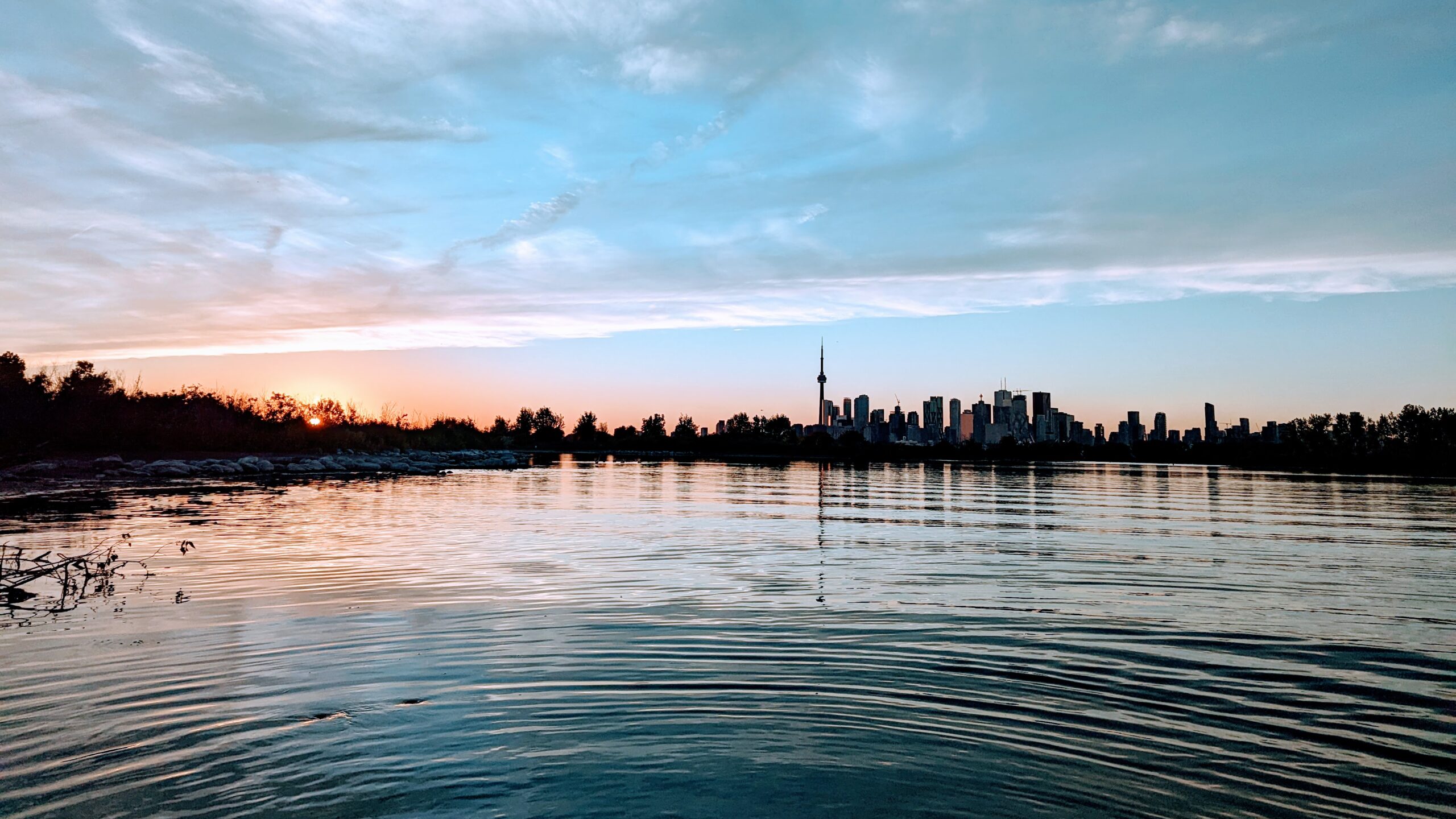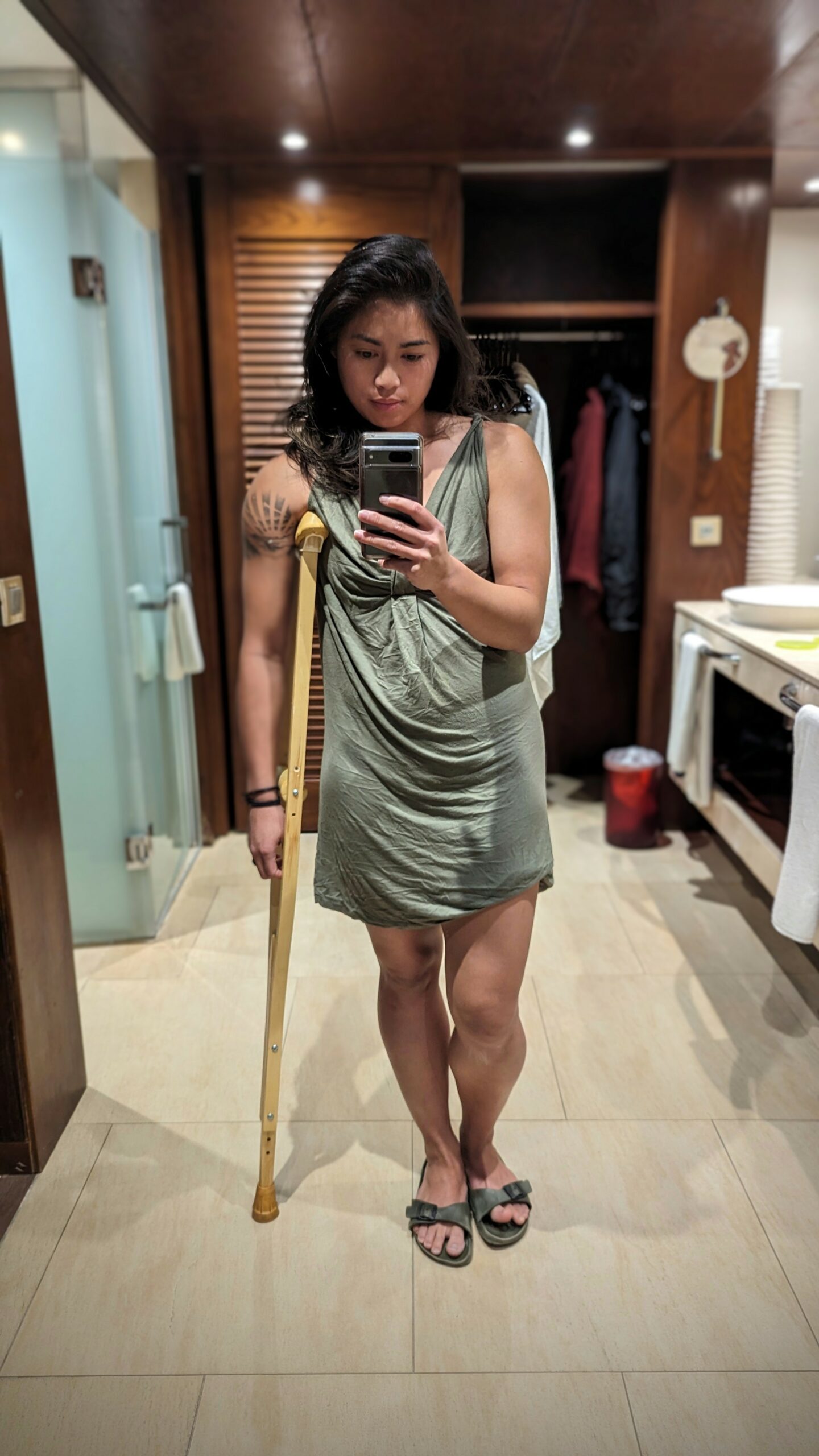I tore my ACL.
I’m waiting for an MRI and started rehab.
I don’t expect to play sports for months.
⏸️ volleyball, climbing, surfing, snowboarding, and… Ultimate.
▶️ rehab, renovations, baking, painting, gliding, and pottery.
I have a deep-seated fear of injury.
I’ve bailed, quit, and given in when I might be remotely close to the risk of injury.
I am so afraid of the moment I am at right now.
I’m afraid of the feelings of pain, shooting or aching waves through my body.
I’m afraid of the pitying looks that I am less than.
I’m afraid of not being able-bodied, my independence taken away from me, replaced with a feeling of helplessness until someone sees me and takes the time to do something for me.
I’m afraid of missing out on the joy, adrenaline, challenge, and fun of able-bodied play, the endorphic drug of sport.
Yet here I am.
One week into walking twice as slow as I usually do, short-tempered, waking up from dreams of running and jumping, and a fading part of me holding onto unrealistic hope that my knee will decide to be just fine.
It’s not as bad as I thought it would be.
The moment of injury was more shock than true pain.
I’m genuinely excited for the time to do other things relegated to “when I wind down Ultimate”.
I’m surprised by how many have been through a knee injury, and I feel supported in the community (I got a lot of tips! See footnotes).1
I feel strong, and I feel stronger every day, with bursts of pride & gratitude at my body’s resilient recovery.
Now that I’m here, exactly where I am afraid of, I realize that the pursuit is worth it.
I often ask myself: what are my limits to pursue these dreams? How far and how hard should I push myself? What are my boundaries?
Risk of injury will always be present; an occupational hazard if you will.
Pursuing dreams is a question of doing so despite that fear, and each step is one in facing that fear.
Now that I’m here, I realize it’s nothing I can’t handle. I’m taking it day by day with really really slow steps.
- My physiotherapist and other medical professionals offered me this advice in my current situation.
I’m not a medical professional, and this isn’t meant to be medical advice for you. You should always consult a medical professional to get the best care for you.
Do your rehab everyday.
After surgery, you will lose some muscle in the affected leg, it is inevitable. Prior to surgery, get your affected leg as strong as possible, even stronger than your other leg.
Ask your surgeon what procedure they like to do. Talk to people and their experiences with the technique. This person has met athletes who have had patellar ligaments used and results/feelings mixed. When researching surgery procedures – consider the pros and cons as well as your sex, build and resources/ability to do the rehab. This person decided a patellar procedure would not have been good for this person based on their body size, and women tend to have smaller ligaments.
The goal is to get to “quiet knee” for quality of life which is:
No pain
No swelling
Comfortable walking gait
Full flexion
Full extension
There’s a relatively new non-graft ACL surgery called BEAR surgery – Bridge enhanced ACL repair.
Continuous icing machines can be helpful for initial swelling and post-operation.
Pool rehab and the leg press machine are excellent for movement and maintaining leg strength.
MRIs in Canada can take a while – call to be put on the cancellation list. Expect these cancellations are in the middle of the night, between 2 and 4 AM.
Ask for which days they tend to have no shows. You could take the chance and go in and sit in the waiting room for the day and ask for them to provide you with your MRI if there is no-show. There is not enough time to have someone come in from the cancellation list when there is a no-show so you might get lucky.
You can try getting added to the cancellation list at Children’s Hospitals.
Make sure you have your own copy of the x-ray imaging in case you get bounced around to different providers. ↩︎


Leave a Reply